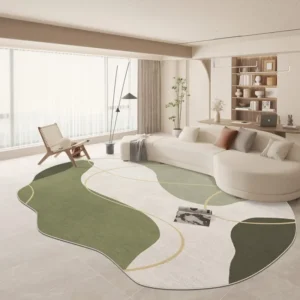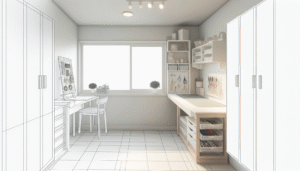
What’s Your Family’s Seating Style? Find the Perfect Arrangement
Ever wondered why some families seem to glide effortlessly through dinner while others… well, let’s just say it’s a bit more chaotic? You know, the kind where elbows clash, someone’s always reaching, and personal space becomes a hilarious myth? A lot of it boils down to your seating arrangement. It’s not just about squeezing everyone around the table; it’s about creating a space that fosters connection, conversation, and maybe even a little bit of peace.
Decoding Your Family Dynamics: What’s Your Seating Personality?
Before you even think about moving furniture, take a moment to observe your family. Are you a bunch of chatty Cathys who love to banter? Or a more reserved crew who appreciate a little breathing room? Understanding your family’s dynamic is the first step. Let’s break down some common seating personalities:
- The Social Butterflies: This family thrives on interaction. They love to share stories, jokes, and maybe even a little bit of good-natured teasing.
- The Quiet Observers: These folks prefer a more relaxed atmosphere. They enjoy being in each other’s company but aren’t necessarily up for constant chatter.
- The Organized Chaos Crew: This is where things get interesting! This family is full of energy and often has competing conversations going on at once.
- The Independent Eaters: Each member is on their own timeline and likes to enjoy the meal in individual space.
Honestly, most families are a blend of these different personalities. The trick is to find a seating arrangement that caters to everyone’s needs as much as possible. It’s like finding the perfect playlist that everyone can tolerate – and maybe even enjoy!
The Classic Configurations: Pros, Cons, and Quirks
Now that you have a sense of your family’s seating personality let’s explore some classic table arrangements. Each one has its strengths and weaknesses, so it’s all about finding the best fit for your unique situation.
Rectangular Tables: The Traditional Workhorse
You know, the good old rectangular table. It’s a classic for a reason. It’s versatile, accommodates larger groups, and creates a sense of formality. But, are they always the best? It really depends.
Pros:
- Great for large families or hosting dinner parties.
- Creates a natural flow of conversation down the table.
- Offers a sense of structure and formality.
Cons:
- Can feel impersonal if the table is too long.
- Makes it difficult to interact with everyone at the table.
- Corner seats can feel isolated.
Best for: Larger families who appreciate a sense of tradition and formality.
Round Tables: Intimacy and Inclusion
Round tables are inherently more inclusive. Everyone is facing each other, which encourages conversation and creates a sense of intimacy. Think of it like a never-ending hug around the dinner table.
Pros:
- Facilitates easy conversation between all diners.
- Eliminates the feeling of being “stuck” at the end of the table.
- Creates a more intimate and welcoming atmosphere.
Cons:
- Not ideal for larger groups (unless you have a REALLY big table).
- Can take up more space than a rectangular table.
- Doesn’t offer as much surface area for serving dishes.
Best for: Smaller families who prioritize connection and conversation.
Square Tables: A Balance of Formality and Intimacy
Square tables are kind of like the middle child of table shapes – they offer a bit of both worlds. They provide a sense of structure while still fostering intimacy. But, can they truly satisfy everyone?
Pros:
- Works well for small to medium-sized families.
- Creates a sense of balance and symmetry.
- Allows for easy conversation between all diners.
Cons:
- Can feel a bit stiff or formal.
- May not be the best choice for very young children (corner collisions!).
- Limited seating capacity.
Best for: Families who appreciate a balance of formality and intimacy.
Beyond the Basics: Creative Seating Solutions for Unique Families
Okay, so maybe your family doesn’t fit neatly into any of the categories above. Don’t worry! There are plenty of creative seating solutions you can try.
The Booth: Cozy Nook for Casual Diners
A booth can add a touch of fun and informality to your dining space. It’s perfect for families who like to relax and get cozy during meal times. You know, those families who love to pile on the blankets during movie night?
Pros:
- Creates a cozy and inviting atmosphere.
- Offers comfortable and relaxed seating.
- Can save space by tucking into a corner.
Cons:
- Can be difficult for some people to get in and out of.
- Limits seating flexibility.
- May not be ideal for formal dining.
Best for: Casual families who prioritize comfort and relaxation.
The Bench: Flexible Seating for Growing Families
Benches are incredibly versatile and can be a great option for families who need a little extra wiggle room. They’re also a fun way to add some personality to your dining area with different textiles.
Pros:
- Provides flexible seating that can accommodate extra guests.
- Can be easily tucked away when not in use.
- Adds a touch of rustic charm.
Cons:
- Can be uncomfortable for extended periods of sitting.
- Doesn’t offer back support.
- May not be suitable for those with mobility issues.
Best for: Families who need flexible seating and appreciate a casual, rustic style.
Mix-and-Match: The Eclectic Approach
Who says you have to stick to one type of seating? Why not mix and match chairs, benches, and even stools to create a unique and personalized dining experience? You know, like that cool art student’s apartment with all the mismatched furniture that somehow just *works*?
Pros:
- Allows you to express your personal style.
- Can accommodate different body types and preferences.
- Adds visual interest to your dining space.
Cons:
- Can look chaotic if not done carefully.
- Requires a good eye for design.
- May not be suitable for formal dining.
Best for: Creative families who want to express their individuality and don’t mind a little bit of visual experimentation.
The Psychological Impact of Seating: More Than Just a Place to Park It
You know what? Seating arrangements can affect us on a much deeper level than we realize. Think about it: where you sit at a meeting, a classroom, or even a family gathering can influence your mood, your interactions, and even your sense of belonging.
Power Dynamics: The Head of the Table
Traditionally, the head of the table is reserved for the “leader” of the family. This can be a parent, grandparent, or any other figure of authority. While this arrangement can create a sense of order, it can also reinforce traditional power dynamics that may not be relevant in modern families. My take? It should be whoever is cooking!
Creating Connections: Facing Each Other
As we touched on earlier, round tables are great for fostering connection because they encourage eye contact and conversation between all diners. But even with a rectangular table, you can strategically place people who you want to connect with each other. A little bit of careful placement can go a long way!
Personal Space: Respecting Boundaries
No one likes feeling cramped or crowded at the dinner table. It’s important to respect everyone’s personal space and ensure that they have enough room to eat comfortably (you know, without accidentally knocking elbows with their neighbor every five seconds).
Practical Considerations: Space, Budget, and Lifestyle
Alright, let’s get real for a second. While it’s fun to dream about the perfect seating arrangement, you also need to consider practical factors like space, budget, and your family’s lifestyle.
Measuring Your Space: Avoiding a Squeeze
Before you buy any furniture, measure your dining area carefully. You don’t want to end up with a table that’s too big or chairs that block doorways. A good rule of thumb is to leave at least 3 feet of space between the table and the walls. This will give you enough room to walk around comfortably.
To ensure accuracy and prevent common measuring mistakes, consider using a laser distance measurer.
Budget-Friendly Options: Seating on a Shoestring
You don’t have to spend a fortune to create a comfortable and stylish dining area. There are plenty of budget-friendly options available, such as buying used furniture, repurposing old chairs, or even building your own bench. Hey, a little DIY can be a fun family project too!
Lifestyle Considerations: Durability and Maintenance
If you have young children or pets, you’ll want to choose seating that’s durable and easy to clean. Look for materials like wood, metal, or stain-resistant fabrics. And don’t forget about maintenance! Some materials require more upkeep than others.
Here’s an external link to a resource on choosing durable furniture: Durable Furniture Guide
Making the Switch: Tips for a Smooth Seating Transition
So, you’ve decided to change up your family’s seating arrangement. Great! But before you start rearranging furniture, here are a few tips for making the transition as smooth as possible.
Communicate Your Intentions: Getting Everyone On Board
Talk to your family about your plans and explain why you think a new seating arrangement would be beneficial. Get their input and be open to their suggestions. The more involved everyone is, the more likely they are to embrace the change. I mean, you don’t want a full-blown mutiny at the dinner table, right?
Experiment and Adjust: Finding the Sweet Spot
Don’t be afraid to experiment with different arrangements until you find one that works for everyone. Try different chair placements, table configurations, and even lighting arrangements. And be prepared to make adjustments along the way. It’s all about finding that sweet spot where everyone feels comfortable and connected.
Embrace the Chaos: It’s All Part of the Fun
Let’s be honest – any change is likely to bring a little bit of chaos (at least initially). But try to embrace it! Remember, the goal is to create a more positive and enjoyable dining experience for your family. So, relax, have fun, and don’t be afraid to laugh at yourselves along the way. You got this.
Seating Etiquette: Navigating the Social Graces
Okay, so you’ve got the perfect seating arrangement. But do your family members know the basic rules of dining etiquette? Things like how to excuse themself from the table, or which side of the plate is bread plate when at a nice restaurant or other formal setting? A little bit of etiquette can go a long way in creating a more pleasant dining experience for everyone (especially when guests are over!).
Basic Table Manners: A Refresher Course
Let’s review some essential table manners. These include things like chewing with your mouth closed, not talking with your mouth full, keeping your elbows off the table (unless the Queen is visiting!), and using your utensils properly. You know, the stuff your grandma probably drilled into you as a kid?
Conversation Starters: Keeping the Chat Flowing
Awkward silences can be a real mood killer at the dinner table. To avoid them, it’s helpful to have a few conversation starters in your back pocket. These can be simple questions like “How was your day?” or more engaging prompts like “What’s the most interesting thing you learned this week?” Need some more ideas? Here is an external link: Dinner Table Question Ideas
Respecting Dietary Needs: Accommodating Everyone
In today’s world, many people have dietary restrictions or preferences. It’s important to be respectful of these needs and accommodate them as much as possible. This might mean offering vegetarian options, avoiding certain ingredients, or simply being mindful of cross-contamination. You know, treat others as you want to be treated (especially when it comes to food!).
FAQ: Your Seating Arrangement Questions Answered
Got some burning questions about family seating arrangements? Here are some common queries (and my attempts to answer them):
var faqQuestions = document.querySelectorAll(‘.faq-question’);
faqQuestions.forEach(function(question) {
question.addEventListener(‘click’, function() {
var answer = this.nextElementSibling;
if (answer.style.display === ‘block’) {
answer.style.display = ‘none’;
} else {
answer.style.display = ‘block’;
}
});
});
Ultimately, the perfect family seating arrangement is one that works for your unique needs and preferences. Don’t be afraid to experiment, get creative, and have fun along the way. Happy seating!
DISCLAIMER
This article provides general information about family seating arrangements. The suggestions and advice provided are not intended to be a substitute for professional interior design consultation. Individual circumstances and preferences may vary.
Categories
- Accent Walls & Ceilings (61)
- Art Curation & Gallery (62)
- Bedding Style Trends (68)
- Bedroom Makeover (81)
- Bohemian & Eclectic Styles (58)
- DIY & Budget-Friendly Decor (64)
- Eco-Friendly Design (62)
- Furniture Care (71)
- Home Decor & Design Ideas (162)
- Home Wellness Spaces (59)
- Integrated Outdoor Living (67)
- Japandi Style (61)
- Kids and Nursery Decor (59)
- Living Room Decor (79)
- Mix & Match Techniques (73)
- Modern & Contemporary Design (66)
- Rug Sizing & Placement (73)
- Scandinavian Design Inspiration (20)
- Seasonal Home Decor (79)
- Small Space Solutions (73)
- Wall Art & Painting Tips (77)
Recent Comments
Archives
Product Gallery
-
 Large Area Green Rugs for Bedroom Nordic Living Room Decoration Shaped Carpet Irregular Plush Lounge Rug Home Thick Washable Mat
Rated 5.00 out of 5$54.94 – $346.41Price range: $54.94 through $346.41
Large Area Green Rugs for Bedroom Nordic Living Room Decoration Shaped Carpet Irregular Plush Lounge Rug Home Thick Washable Mat
Rated 5.00 out of 5$54.94 – $346.41Price range: $54.94 through $346.41 -
 Nordic Style Rugs for Bedroom Morandi Living Room Decoration Carpet Large Area Geometry Lounge Rug Home Cloakroom Non-slip Mat
Rated 5.00 out of 5$39.46 – $597.66Price range: $39.46 through $597.66
Nordic Style Rugs for Bedroom Morandi Living Room Decoration Carpet Large Area Geometry Lounge Rug Home Cloakroom Non-slip Mat
Rated 5.00 out of 5$39.46 – $597.66Price range: $39.46 through $597.66 -
 Irregular Shapes Living Room Decoration Carpet Modern Style Rugs for Bedroom Home Thicken Plush Rug Fluffy Soft Lounge Floor Mat
Rated 4.83 out of 5$55.84 – $347.37Price range: $55.84 through $347.37
Irregular Shapes Living Room Decoration Carpet Modern Style Rugs for Bedroom Home Thicken Plush Rug Fluffy Soft Lounge Floor Mat
Rated 4.83 out of 5$55.84 – $347.37Price range: $55.84 through $347.37











